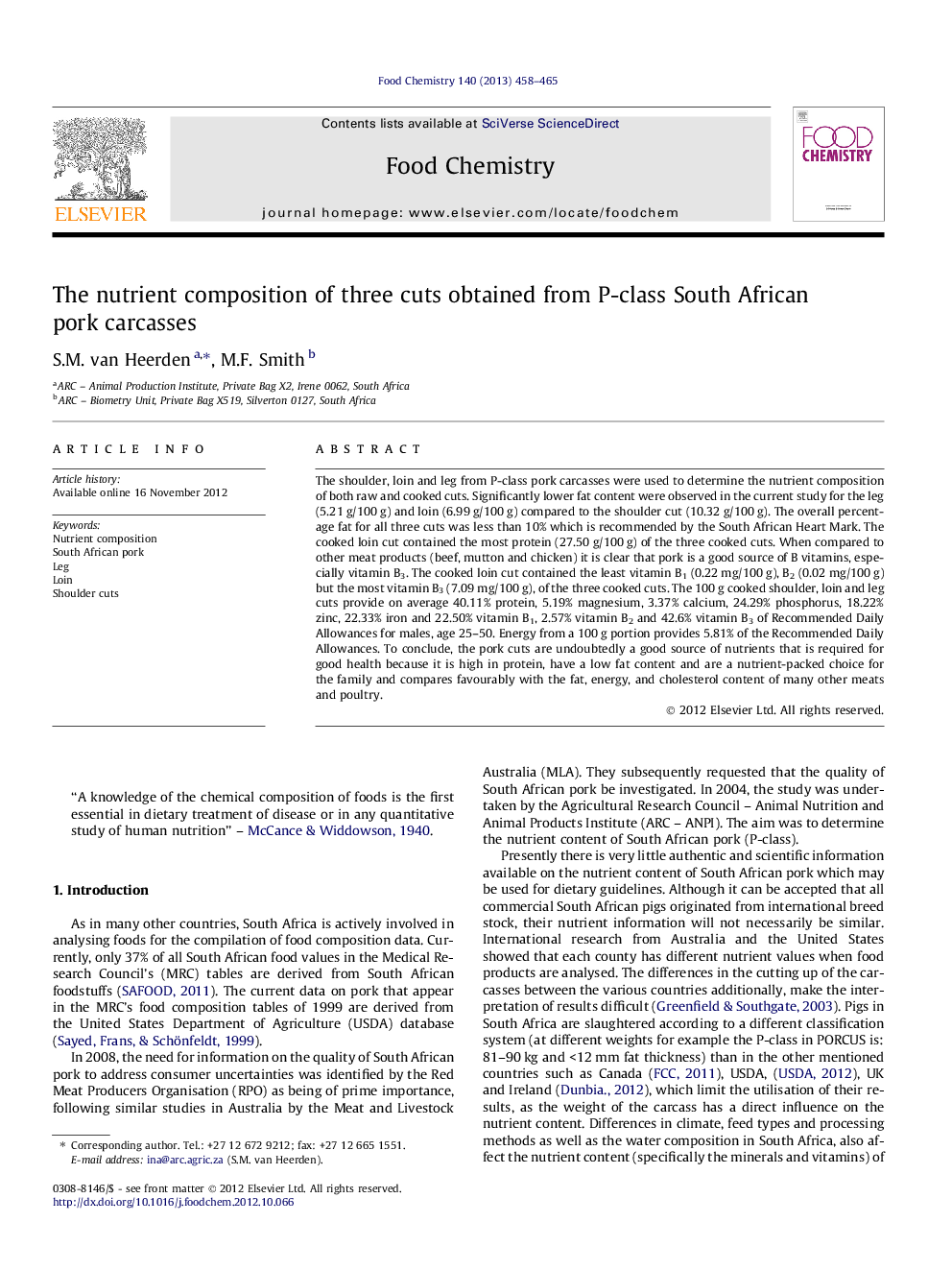| Article ID | Journal | Published Year | Pages | File Type |
|---|---|---|---|---|
| 1184037 | Food Chemistry | 2013 | 8 Pages |
The shoulder, loin and leg from P-class pork carcasses were used to determine the nutrient composition of both raw and cooked cuts. Significantly lower fat content were observed in the current study for the leg (5.21 g/100 g) and loin (6.99 g/100 g) compared to the shoulder cut (10.32 g/100 g). The overall percentage fat for all three cuts was less than 10% which is recommended by the South African Heart Mark. The cooked loin cut contained the most protein (27.50 g/100 g) of the three cooked cuts. When compared to other meat products (beef, mutton and chicken) it is clear that pork is a good source of B vitamins, especially vitamin B3. The cooked loin cut contained the least vitamin B1 (0.22 mg/100 g), B2 (0.02 mg/100 g) but the most vitamin B3 (7.09 mg/100 g), of the three cooked cuts. The 100 g cooked shoulder, loin and leg cuts provide on average 40.11% protein, 5.19% magnesium, 3.37% calcium, 24.29% phosphorus, 18.22% zinc, 22.33% iron and 22.50% vitamin B1, 2.57% vitamin B2 and 42.6% vitamin B3 of Recommended Daily Allowances for males, age 25–50. Energy from a 100 g portion provides 5.81% of the Recommended Daily Allowances. To conclude, the pork cuts are undoubtedly a good source of nutrients that is required for good health because it is high in protein, have a low fat content and are a nutrient-packed choice for the family and compares favourably with the fat, energy, and cholesterol content of many other meats and poultry.
► Overall % fat for three cuts was less than 10% ass recommended by the SA Heart Mark. ► Comparing to other meat products pork is a good source of B vitamins. ► Pork makes a valuable nutrient contribution to the RDA, males & females 25–50 years. ► Successful pork campaign could be launched on the theme: pork as the other white meat.
